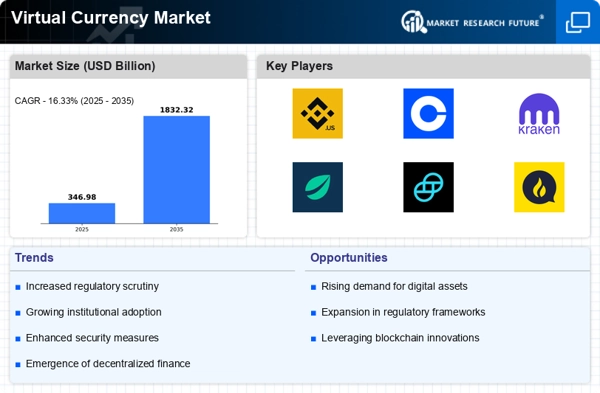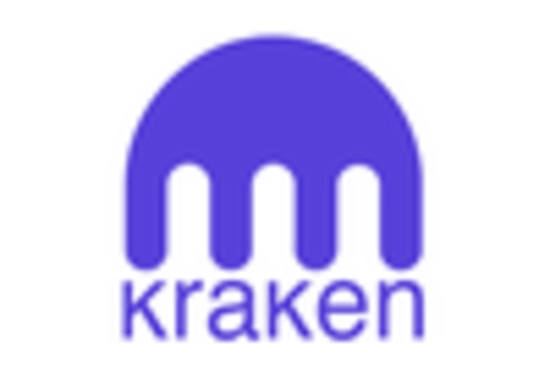Rising Consumer Demand
The Virtual Currency Market is experiencing a notable surge in consumer demand, driven by increasing awareness and acceptance of digital currencies. As more individuals seek alternative investment opportunities, the market has seen a significant uptick in participation. Recent data indicates that the number of active cryptocurrency wallets has surpassed 100 million, reflecting a growing interest among retail investors. This trend suggests that consumers are increasingly viewing virtual currencies as a viable asset class, potentially leading to further market expansion. Additionally, the rise of decentralized finance (DeFi) platforms has contributed to this demand, as they offer innovative financial services that attract users. The Virtual Currency Market appears poised for continued growth as consumer interest evolves and matures.
Regulatory Clarity and Compliance
Regulatory clarity is becoming increasingly crucial for the Virtual Currency Market, as governments and regulatory bodies worldwide seek to establish frameworks for digital currencies. Recent developments indicate that several countries are implementing comprehensive regulations to address issues such as taxation, anti-money laundering, and consumer protection. This regulatory environment may foster greater confidence among investors and institutions, potentially leading to increased participation in the market. For instance, the European Union is working on a regulatory framework that could standardize rules across member states, which may enhance the legitimacy of virtual currencies. As compliance becomes more defined, the Virtual Currency Market could witness a surge in institutional investment, further solidifying its position in the financial ecosystem.
Integration of Blockchain Technology
The integration of blockchain technology within the Virtual Currency Market is a pivotal driver of growth. Blockchain provides a decentralized and secure framework for transactions, enhancing transparency and trust among users. As various sectors, including finance, supply chain, and healthcare, begin to adopt blockchain solutions, the demand for virtual currencies is likely to increase. Reports suggest that The Virtual Currency Market is projected to reach USD 163 billion by 2027, indicating a robust interest in the technology that underpins many cryptocurrencies. This integration not only facilitates smoother transactions but also encourages innovation in the Virtual Currency Market, as new applications and use cases emerge. Consequently, the synergy between blockchain and virtual currencies may lead to a more resilient and dynamic market landscape.
Technological Advancements in Security
Technological advancements in security are becoming a critical driver for the Virtual Currency Market. As the market matures, the need for robust security measures to protect digital assets has become paramount. Innovations such as multi-signature wallets, hardware wallets, and advanced encryption techniques are being developed to enhance the security of virtual currencies. Recent data suggests that security breaches have decreased by approximately 30% in the past year, indicating that the industry is making strides in safeguarding user assets. This focus on security not only protects investors but also fosters trust in the Virtual Currency Market, encouraging more individuals and institutions to participate. As security technologies continue to evolve, they may play a vital role in shaping the future of the virtual currency landscape.
Adoption of Central Bank Digital Currencies (CBDCs)
The emergence of Central Bank Digital Currencies (CBDCs) is poised to significantly impact the Virtual Currency Market. As central banks explore the potential of digital currencies, the landscape of virtual currencies may undergo substantial transformation. Recent studies indicate that over 80% of central banks are actively researching or developing CBDCs, which could lead to increased public interest in digital currencies. The introduction of CBDCs may also legitimize the concept of digital currencies, encouraging broader acceptance among consumers and businesses. This shift could create a more competitive environment within the Virtual Currency Market, as traditional financial institutions adapt to the changing landscape. The potential for CBDCs to coexist with existing cryptocurrencies may further stimulate innovation and investment in the sector.


















Leave a Comment